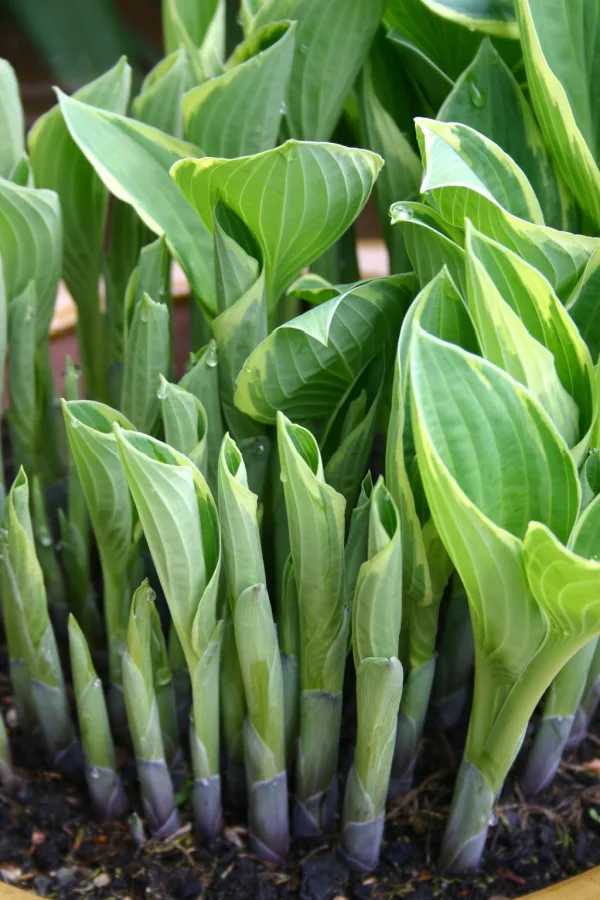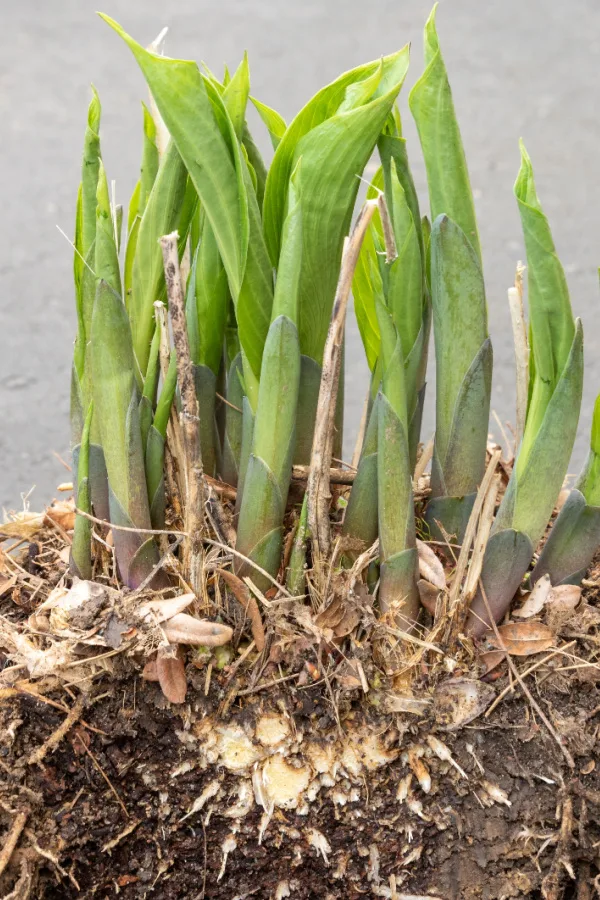Fall is the perfect time to cut back, divide and transplant any of your damaged, weathered or overgrown hostas. Not only will it clean up your flowerbeds – it will also help to rejuvenate them for next year to grow better than ever. And, give you more hostas for free!
By summer’s end, the once large and beautiful leaves of hostas are often left tattered and torn. Their foliage usually has plenty of holes and damage – either from pests and wildlife looking for a meal, or from weathering a long hot summer season.
As the plants begin to slowly deteriorate, it can certainly make for unsightly flowerbeds. But even more, it can leave hostas weak and fragile. That weakened state can not only affect their health this year, but carry over to next year as well.

The good news is late summer and early fall are the perfect time to give hosta plants a little TLC. Not just by cutting them back and preparing them for winter – but also to divide and transplant any overgrown hostas to really help power them back to life next year. And best of all – you can get a lot of free hosta plants in the process!
With that in mind, here is a look at how to give your hostas the perfect dose of fall care – including how to cut back, dig up, divide and transplant new starts to set the stage for an incredible display in your flowerbeds next spring and summer!
How To Cut Back, Divide & Transplant Hostas In The Fall
Cutting Hostas Back
Hostas are a very hardy and durable perennial. In fact, although their foliage can be decimated by insects and completely devoured by hungry deer or rabbits, it’s quite hard to actually kill the entire plant.
If you have even been so unfortunate to have your hostas visited by deer during the growing season, you are probably well aware that even when they munch down the plant to within inches of the ground, the hosta will regrow its foliage time and time again. We know that all too well at our new farm!
Because of that, cutting back damaged plants at any point will not harm them in the least – especially in late summer and early fall. In fact, if there is enough warm weather left, hostas will happily regrow their foliage up until the first frost.
If your plants are looking less than idea in early September, don’t wait until late fall to go to work. Instead, get those shears and cut your plants back to within a few inches of the ground. And if your plants are getting too big, it’s also a great time to divide and transplant.
Dividing & Transplanting – How To Cut Back, Divide & Transplant Hostas In The Fall
Dividing your transplants in late summer and early fall actually is better than waiting until late fall or early spring. Why? Because it gives your hostas a chance to set roots. That means that when spring rolls around next year they are ready to grow right from the start to their full potential.
Once your plants are cut back to within a few inches of the ground, begin by digging around the outer perimeter of the plant. Simply slide your shovel in around the outside edge of the roots. Once you have cut all around the plant, slide the shovel deeper and lift the root ball out of the ground.
Don’t stress if you happen to cut into a few of the tuberous roots while digging, they can handle a bit of damage with ease. Once out of the ground, turn the root ball over and divide it by slicing through the roots with the blade of a shovel or a sharp garden knife.
By turning the plant over, it’s far easier to see the root size. This will allow for more even-sized cuts which will make for plants that grow to near identical sizes. Remember that the size of the new plants the following year will fall in line with the size of the cuttings. The larger the cutting, the larger the plant will grow in the first year.
Replanting New Divisions – How To Cut Back, Divide & Transplant Hostas In The Fall
Now it’s time to plant the cuttings into their new location. The sooner you can replant transplants the better. The more time they can have to set roots before the first frost will help their performance next year.
Dig new planting holes to one-and-a-half times the size of the cutting. Next, mix in equal amounts of compost and soil to the hole and set the new division so that the crown of the roots are level to the surface of the ground.
The compost is excellent for giving your new transplants a little energy and loosening the soil to make it easy for their roots to set. All that is left is to water and mulch, and your new plants will be ready to roll come spring!
In fact, if the weather stays warm enough, your new transplant cuttings might even send up a few new shoots and leaves. It will not harm the plant, and they will simply die back once the first frost hits.
Listen In To Our Podcast Below On How To Divide Perennials This Fall!
Cutting Back After A Frost – How To Cut Back, Divide & Transplant Hostas In The Fall
Once a heavy frost or hard freeze occurs in the fall, your hostas will shrivel away quickly – whether they have tender young foliage from new transplants or have been growing all season long. At this point, it is time to cut the foliage back for good and prepare the plants for winter.
Although you can leave the foliage in place through winter, it is better to remove the spent leaves. And for a couple of very important reasons.
For starters, the dead foliage can harbor both insects and disease over winter. In addition, leaving the decaying leaves in place is also quite unsightly. Even more, it makes for great fall compost material too!
To cut back, simply use a sharp pair of garden shears. Cut back within an inch of the ground and clear away the foliage. Finish by adding a few inches of mulch on top to protect the roots from winter.

One thing you do not want to do at this point is fertilize. Fertilizing perennials late in the fall will cause unwanted late and very tender growth. And that can leave the plant highly susceptible to freezing out over the winter.
Here is to giving your hosta plants some TLC this fall. And, to healthier plants and bigger blooms next year! Happy Gardening – Jim and Mary.
Jim and Mary Competti have been writing gardening, DIY and recipe articles and books for over 15 years from their 46 acre Ohio farm. The two are frequent speakers on all things gardening and love to travel in their spare time.
As always, feel free to email us at thefarm@owgarden.com with comments, questions, or to simply say hello! You can sign up for our free email list in the subscribe now box in the middle of this article. Follow us on Facebook here : OWG Facebook. This article may contain affiliate links.


